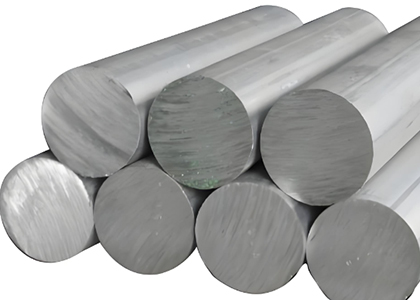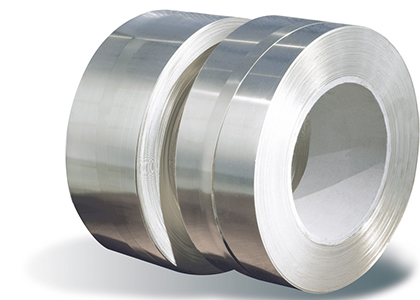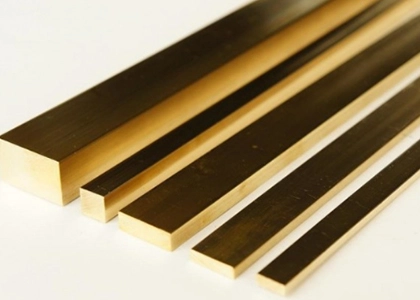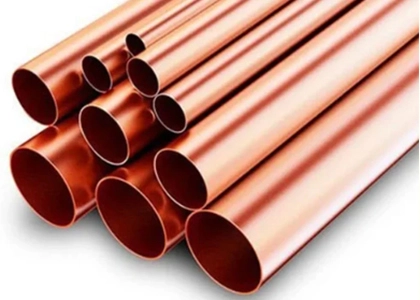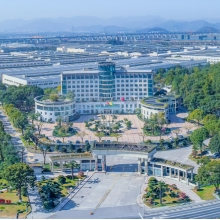Grade Designation & Standards
Standard Grade: C7150 (B10 Copper-Nickel Alloy)
International Equivalents:
UNS (USA): C71500
EN (Europe): CW354H
JIS (Japan): C7150
Applicable Standards:
ASTM B122 (Copper-Nickel Alloy Plate, Sheet, Strip, and Rolled Bar)
EN 12449 (Copper and Copper Alloys – Seamless Round Tubes)
GB/T 5231-2012 (Wrought Copper Alloys)
Key Features
1. Exceptional Corrosion Resistance: Performs reliably in seawater, salt spray, and acidic environments (corrosion rate ≤0.01 mm/a)
2. High Mechanical Strength: Balanced tensile strength and ductility after heat treatment.
3. Thermal Stability: Maintains performance in high-temperature applications (up to 400°C).
4. Ease of Fabrication: Supports cold/hot working, welding, and machining.
5. Anti-Biofouling Properties: Ideal for marine applications due to resistance to microbial adhesion.
Common Product Forms & Specifications
Product Form | Size Range | Delivery Condition |
Rod | Diameter: 5–150 mm; Length: 1–6 m | Annealed, Cold-drawn |
Sheet/Strip | Thickness: 0.5–12 mm; Width ≤1200 mm | Soft (O), Hard (H) |
Tube | OD: 10–200 mm; Wall Thickness: 1–15 mm | Annealed, Half-hard |
Wire | Diameter: 0.5–10 mm | Coiled or Straight |
Custom Profiles | As per technical drawings | Tailored processing states |
Chemical Composition
Element | Cu | Ni | Fe | Mn | Impurities |
Content | 62.0–71.0% | 29.0–33.0% | 0.4–0.6% | ≤1.0% | ≤0.5% |
Typical impurities include Pb ≤0.02%, Si ≤0.5%, C ≤0.05% .
Physical Properties
Property | Value | Remarks |
Density | 8.94 g/cm³ | High density for structural stability |
Melting Point | 1000–1020°C | Suitable for high-temperature brazing |
Electrical Conductivity | ~5% IACS | Low conductivity, typical for Cu-Ni alloys |
Thermal Conductivity | 29–40 W/(m·K) | Moderate heat dissipation |
Thermal Expansion Coefficient | 16.5×10⁻⁶/°C (20–200°C) | Stable dimensional performance |
Mechanical Properties
Property | Annealed (Soft) | Cold-Worked (Hard) |
Tensile Strength (Rm) | 380–500 MPa | 550–700 MPa |
Yield Strength (Rp0.2) | 130–240 MPa | 450–550 MPa |
Elongation (A50) | 30–40% | 3–8% |
Hardness (HV) | 70–80 | 160–220 |
Core Advantages
1. Marine Durability: Resists pitting and crevice corrosion in seawater, outperforming standard stainless steel .
2. Heat Treatment Flexibility: Optimized strength via annealing (600–700°C) or cold working.
3. Low Maintenance: Long service life in harsh environments reduces replacement costs.
Product Applications
Marine Engineering: Ship hulls, seawater piping, heat exchangers .
Chemical Processing: Reactors, condensers, acid-handling equipment.
Power Generation: Desalination plants, offshore wind turbine components.
Oil & Gas: Subsea valves, drilling equipment.
Processing Guidelines
1. Annealing: Heat to 600–700°C for 1–2 hours, followed by air cooling to relieve stress.
2. Welding: Use TIG or MIG welding with matching filler metals (e.g., ERCuNi).
3. Machining: Employ carbide tools with sulfur-based coolants; cutting speed ≤60 m/min.
4. Surface Treatment: Passivate with nitric acid solutions or apply protective coatings (e.g., epoxy).
Key Application Scenarios
Seawater Cooling Systems: Tubing and heat exchangers in ships and coastal plants.
Offshore Platforms: Pump shafts and valve components exposed to saltwater.
Chemical Reactors: Liners and agitators for corrosive media.
FAQs
Q1: How does C7150 compare to C70600 (90/10 Cu-Ni)?
A1: C7150 (70/30 Cu-Ni) offers higher strength and better corrosion resistance but is costlier.
Q2: Can C7150 be used in high-temperature steam environments?
A2: Yes, it withstands temperatures up to 400°C but requires stress relief annealing above 300°C.
Q3: How to prevent cracking during cold forming?
A3: Limit deformation to ≤20% per pass and anneal between stages .
Standard References
Chemical Composition: ASTM B122, EN 12449 .
Mechanical Testing: ISO 6892-1 (Metallic Materials – Tensile Testing).
Processing: ASTM B543 (Standard for Copper-Nickel Alloy Seamless Condenser Tubes).
Note: Data consolidated from industrial standards and material testing reports. Actual properties may vary slightly depending on manufacturing processes. For precise specifications, consult supplier certifications.

 English
English 한국어
한국어 français
français Deutsch
Deutsch Español
Español italiano
italiano العربية
العربية tiếng việt
tiếng việt Türkçe
Türkçe ไทย
ไทย 中文
中文
